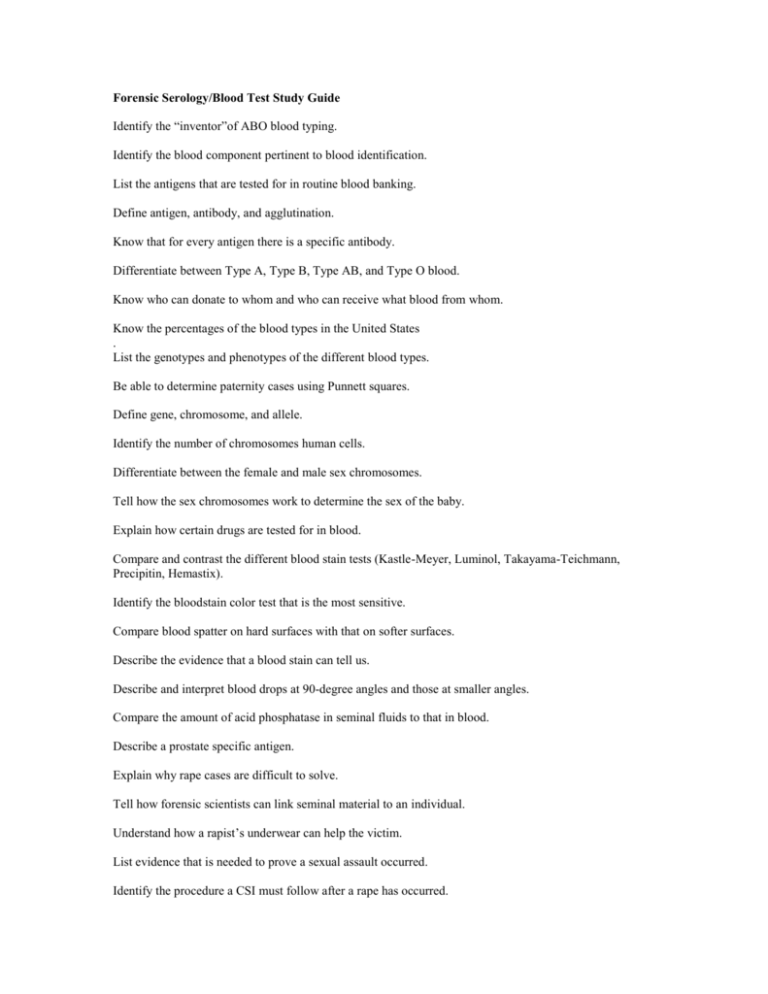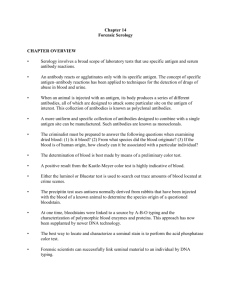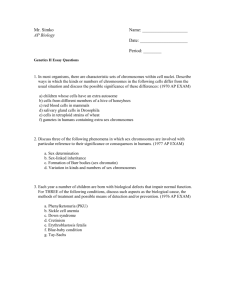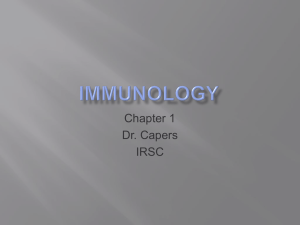Forensic Serology/Blood Test Study Guide
advertisement

Forensic Serology/Blood Test Study Guide Identify the “inventor”of ABO blood typing. Identify the blood component pertinent to blood identification. List the antigens that are tested for in routine blood banking. Define antigen, antibody, and agglutination. Know that for every antigen there is a specific antibody. Differentiate between Type A, Type B, Type AB, and Type O blood. Know who can donate to whom and who can receive what blood from whom. Know the percentages of the blood types in the United States . List the genotypes and phenotypes of the different blood types. Be able to determine paternity cases using Punnett squares. Define gene, chromosome, and allele. Identify the number of chromosomes human cells. Differentiate between the female and male sex chromosomes. Tell how the sex chromosomes work to determine the sex of the baby. Explain how certain drugs are tested for in blood. Compare and contrast the different blood stain tests (Kastle-Meyer, Luminol, Takayama-Teichmann, Precipitin, Hemastix). Identify the bloodstain color test that is the most sensitive. Compare blood spatter on hard surfaces with that on softer surfaces. Describe the evidence that a blood stain can tell us. Describe and interpret blood drops at 90-degree angles and those at smaller angles. Compare the amount of acid phosphatase in seminal fluids to that in blood. Describe a prostate specific antigen. Explain why rape cases are difficult to solve. Tell how forensic scientists can link seminal material to an individual. Understand how a rapist’s underwear can help the victim. List evidence that is needed to prove a sexual assault occurred. Identify the procedure a CSI must follow after a rape has occurred.











